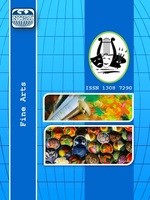YARATICILIĞIN İNSAN HAYATINDAKİ ROLÜ VE ÖNEMİ
Yaratıcı düşünce, gerçekte her insan da vardır, içgüdülerle harekete geçer, geçmiş deneyim ve birikimlerle birlikte çoğunlukla hayatı şekillendirir. Yaratıcı düşüncenin varlığı, bizlere hayatın devamlılığı konusunu düşündürmektedir. Nasıl ortaya çıktığı, nelerden ve nasıl etkilendiği, hayatı ne şekilde yönlendirdiği, kimlerde olduğu gibi soruları sorduranda aslında yaratıcı düşüncenin kendisidir. Engellenmediği takdirde hayatın akışını etkileyebilecek olan yaratıcı düşünce bir diğer ifadeyle âyaratıcılıkâ gerçek anlamıyla çevremizi sarmalamaktadır. Yaşam alanlarının tümünü etkisi altına alan yaratıcılık, hayatı kolaylaştırmanın yanında, görsel, düşünsel ve işitsel anlamda zenginleştirmektedir. İletişim dili veya ifade biçimi nasıl olursa olsun yaratıcılık, olumsuz etki ve engellerin kaldırılması durumunda hayata olumlu katkılar sağlamaktadır. Makalede bu konular ele alınarak, yaratıcılık kavramının ne olduğu ve insan hayatı üzerindeki etkileri çeşitli yönleriyle incelenmiştir.
Anahtar Kelimeler:
Yaratıcılık, Yaratıcı Düşünce, Tasarım, Fikir, Yaratıcı Etki,
THE ROLE AND IMPORTANCE OF CREATIVITY IN HUMAN LIFE
Every human being is creative thinking, instincts into action. Directs his life savings but with past experience and creative thinking. The presence of creative thinking, suggests to us the issue of continuity of life. How can arise, what and who is affected, how driven life, who is the creative thinking of questions like that. Creative thinking that can affect the flow of life is not blocked, or in other words "creativity" to enclose the true meaning of our surroundings. Creativity, which affects all areas of life, next to simplifying the life of visual, auditory sense and enriching the intellectual and. Communication language or form of expression, no matter how creative, the negative impact and if the removal of barriers will provide a positive contribution to life. In the article by considering these issues, what is the concept of creativity and examined various aspects of their effects on human life.
Keywords:
Creativity, Creative Thinking, Design, Idea, Creative Impact, ,
___
- Boden, M.A., (1994). Dimensions Of Creativity. Massachusetts: First MIT Press.
- Deliege, I. and Wiggins, G., (2006). Musical Creativity. New
- York: Psychology Press. Foster, J., (1996). How To Get Ideas. San Francisco: BerrettKoehler Publishers.
- Ginsber, R., (1985). Creativity and Culture. Creativity In Art, Religion and Culture (Ed. by Michael H. Mitias). Amsterdam: Editions Rodopi. http://www.erikgriffioen.nl/index.html (01.08.2012).
- Kaufman, J.C., (2009). Creativity 101. New York: Springer Publishing.
- Moran, J., (1978). Printing Presses. Los Angeles: University of California Press.
- Ress, F., (2006). Johannes Gutenberg Inventor Of The Printing
- Press. Minneapolis: Compass Point Books. Runco, M.A., (2007). Creativity Theories and Themes: Research, Development And Practice. California: Elsevier Academic Press.
- Starko, A.J., (1995). Creativity in the Classroom. New York: Longman Publishers.
- Strenberg, R., (2007). Creativity As A Habit. Singapure: World
- Scientific Publishing. Swahn. A.L. and Svahn, S., (2008). Creativity. Bloomington: AuthorHouse.
- Ürper, Y., (2005). Girişimcilik. Eskişehir: Anadolu Üniversitesi WebOfset.
- Williams, J.H., (2012). Wings of Opportunity. Montggomery: NewSouth Books.
- Başlangıç: 2009
- Yayıncı: E-Journal of New World Sciences Academy
Sayıdaki Diğer Makaleler
MÜZİK YOLU MASA OYUNUNUN İLKÖĞRETİM 7. SINIF ÖĞRENCİLERİNİN ÖĞRENME DURUMUNA ETKİSİ
Hatice EKİNCİ, Yunus Utkan ÖZDEMİR
YARATICILIĞIN İNSAN HAYATINDAKİ ROLÜ VE ÖNEMİ
OKUL ÖNCESİ ÖĞRETMENLERİNİN MÜZİK ÖĞRETİMİNE YÖNELİK ÖZYETERLİK DÜZEYLERİNİN İNCELENMESİ
PİYANO EĞİTİMİNDE BAŞARIYI ETKİLEYEN FAKTÖRLER
Tuba YOKUŞ, Hamit YOKUŞ, Şükrü Göktuğ KALAYCIOĞLU
